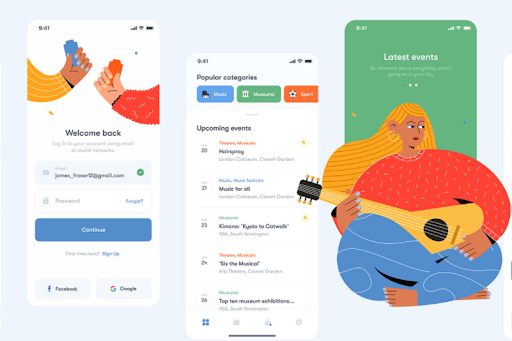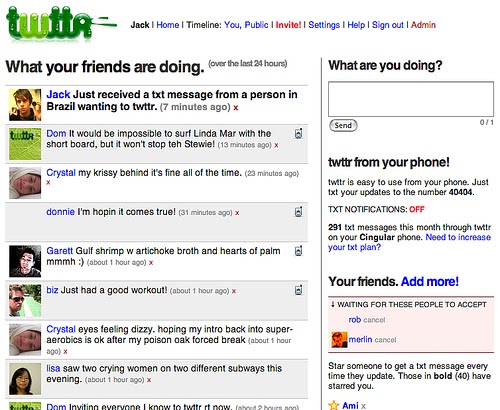Working on collaborative culture, agile teams split the tasks and workload of the project to improve productivity and be highly efficient in completing the job. Executing in the website and app design, you can acquire multiple benefits of agile development methods to smoothen the workflow processes.
Since agile methodology validates and iterates product development as per user’s feedback, prototyping and MVP development are integral parts of agile development.
Both MVP and Prototype help you get the user’s input to determine whether the developed product provides the desired results and user experience. Not only do these processes validate the product, but they also make the development process faster and easier.
So, what is the difference between MVP and Prototype? Which process is suitable for your product development?
Being a lightweight early-version of the product and part of agile product development, in theory, both MVP and Prototype seem similar.
Both the product development processes have a few significant differences. Let’s find out under this guide.
What is a Prototype?
Prototype refers to the working model of the product that displays the functionality of the final or under development product, its look, and the user flow. Prototyping is the initial phase in product development where designers can interact with the application. However, it can lack the actual logic behind the original product.
The primary purpose of the prototype is to give a shape of the vision behind your product. This process helps developers to get a well-defined abstract of what will be developed in due course.
Prototype Dimensions
A prototype is mainly categorized into two dimensions:
-
Horizontal Prototype
A horizontal prototype is a user interface prototype that helps designers and developers envision how users interact with the product. This type of prototype is developed at an early stage; however, it is more than low-level system functionality as it gives a broad idea of the user interface.
A prototype development company uses interactive UX wireframes or UI screens to provide the view of user interaction without the back-end. It helps to estimate the development time, requirements, system scope, cost, and effort.
-
Vertical Prototype
A vertical prototype is designed at a nearly complete working system at the later stages. It is an enhanced product model or a specific feature in detail that includes a user interface and back-end with a database connection.
It helps to determine data volumes, system interface needs, database design, system functionality, and more.
What Are the Different Types of Software Prototyping?
Nowadays, prototypes vary for digital and physical products like sketches, diagrams, 3D printing, rapid models, wireframes, working models, video prototypes, etc.
Depending on your needs and the effort, a prototype can be a simple paper sketch or a clickable screen with fancy buttons, dropdowns, and other UI elements.
Here are the different types of software prototypes that you can select depending on your skill level.
-
Throwaway Prototyping
This prototype type is suitable for getting quick feedback from the user on the product as prototype developers can quickly refine them with minimum effort, time, and budget. In the end, this prototype will be discarded after understanding the user requirements. This model is also called rapid or close-ended prototyping.
-
Evolutionary Prototyping
This model is intended to evolve during the development; thus, this model is built in a structured manner, making the refinement process constant. Also known as breadboard prototyping, the requirement gets adhered to as they arrive in this prototype.
-
Incremental Prototyping
In this type of prototyping software model, the prototype is built through multiple functional pieces of sub-systems and then merged to form a complete design.
-
Extreme Prototyping
This software prototyping model is used in web application development. Dividing into three phases, it develops web application prototypes. First, a static prototype consisting of HTML pages, followed by programming those pages to make them fully-functioned, including data processing. In the third stage, the services are implemented to make the final prototype.
Prototype Examples
Need some practical ideas for prototypes? Here, we have listed some excellent examples to give a clear idea about prototypes.
Nectarine – Mobile App Prototype Design

Food Delivery Website – Wireframe

Ticketplace (Buy Ticket Online) – Mobile App Prototype

MVP Explained
An MVP (minimum viable product) is the product development approach in which a sample product is developed with essential features that can represent the product’s core value. This approach is used to attract early-adopter users & investors and validate the product idea early in the product development cycle.
In the product development process, an MVP development company can help the industries’ development team get user feedback on the product to improve it before releasing the final product. This process’s main benefit is to understand how the product will perform in the market before the final release and how its function can be improved.
Moreover, it helps to know whether or not the product meets the company’s target market before investing an enormous budget in the full product’s development. This process can stop the product team from committing to the project idea that may fail and minimize the invested time and resources.
To know MVP development in-depth, read our step-by-step guide to build the Minimal Viable Product (MVP).
Fundamental Differences Between Prototypes and MVP
Below are fundamental differences between MVP and prototype, described in four categories.
-
Purpose
The primary purpose of the prototype is to exhibit the look and feel of the product by verifying design concepts. In contrast, the MVP consists of enough features required to meet users’ needs to determine how the product can be improved based on its market demand.
-
Time Invested
There is very little time and effort needed to develop a prototype. Also, the ideas can be adapted, altered, and thrown away very quickly. Therefore, it only takes 2 weeks to 1 month to build a prototype, depending on the project.
However, you explore the product idea in MVP development, meaning putting more effort with more resources. It can take 2 to 6 months to roll out the MVP development services.
-
Suitable Approach
You can use a prototype development approach if you are sure of the feasibility of the product development idea and want to test the design concept.
MVP development can be used when you’re aware of the technical possibilities and the design but want to validate the product idea before launching it on the market.
-
Testing Method
A prototype is tested within the company, the professional testers, and a small audience of the targeted customers. However, MVP is developed to test with a wide range of target audiences.
Prototype vs MVP: Choose the Right Approach at the Right Time
This section will help you understand what approach is suitable for your product development and which development stage you can use.
Prototype
-
Design Validation and Feedback
It will help your developers to visualize the look and feel of the product.
-
Determining User Flow
It helps you understand how the app flows and interacts with the user and the features to be added during the application development.
-
Representing Project Visual and Idea
If you need to show your developers what to build, a prototype is a suitable approach as it helps you communicate with your design and engineering teams.
MVP

Fig: One of the early versions of Twitter MVP
To know more use cases of MVP, read our MVP development guide.
-
Validating Project Idea
Get insights on the project idea based on the market perspective and initial customer feedback.
-
Attracting Initial Users
Use this approach to attract the initial user base of the product before the release of the final product.
-
Attracting Investors
If you want to attract investors for your project, you can make your project idea reach out to investors through MVP development.
Things to Keep in Mind While Developing Your Prototype or MVP
Learn From Your Mistakes
Prototyping and MVP development are build-measure-learn processes; therefore, there is no need to dwell on its development process much. Plan the prototype and MVP thoughtfully, release its first version, learn from your mistakes and release the next model until you’re confident to make the final development process.
Focus on Customers
Ultimately, you’re designing the application for the people. Thus, it should add value to your customer’s life. Therefore, create the MVP and prototype to discover their views on the product and ensure that the developed product is customer-centric.
Conduct Market Research
Perform thorough market research and competitor analysis to find your product’s best model and features.
Validate the Product Approach
Don’t forget to take, analyze, and implement the user’s feedback. Keep in mind the product design and features are developed to appeal to your target audience.
Iterative Process
Don’t settle on the first model; experiment and explore many ideas and find the perfect solution for your product.
Conclusion
That was the simple yet effective explanation of the difference between prototype vs MVP. We have thoroughly reviewed each process to give you an in-depth understanding of both the MVP development and prototyping process.
Both prototyping and MVP development are integral parts of your product design process. If you have any problems developing your website and mobile app model or need professional assistance in prototype designing, you can contact Sparx IT Solutions.
We provide leading prototype development services to help our clients achieve great success with their designs. Depending on your development stage and your future goals, we can help you out with your choice of product development strategy.



